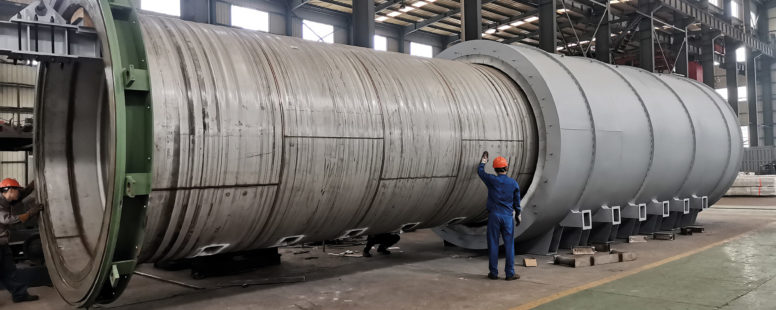Yantai Fisend recently began a search for additional annealing capacity, with strict performance specifications. After products are rolled, they require bright annealing at a temperature of 320 °C. The surface must remain free of damage and scratches, before the annealed product is removed at a temperature below 55 °C. Furnace capacity was specified as 6 t. Typical products such as wire and busbar material can be seen on the right.
In the search for solutions, we first considered a bell annealer. To increase the output of the furnace, we proposed that the charged copper coils be tilted and placed on the workbase with coil carriers. However, tilting loose copper coils does not guarantee that the surface of the strip will remain undamaged. Furthermore, if this charging method was adopted by the customer, the load-ing capacity would be very low. Much of the workload space would remain empty, preventing the requested throughput capacity from being met.
The next solution that was considered was a batch-type (chamber) furnace. There would be no need to tilt the copper strip, which could be charged directly into the furnace – and the throughput capacity would meet the customer’s requirements. However, the batch furnace solution would use nitrogen as a process atmosphere. This would mean that the oxygen content in the furnace would not be less than 2000 ppm, and a bright surface on the annealed product could not be ensured. Furthermore, the cooling rate in such furnaces is low during the cooling phase, and it would have been impossible to achieve the outlet temperature of 55 °C or less that had been speci-fied by the customer.
EED‘s designers thus turned to a new solution: they envisioned a “horizontal bell annealer” for bright anneal-ing, combining the advantages of both a bell annealer and a batch-type/chamber furnace. This unique design has since been patented.


